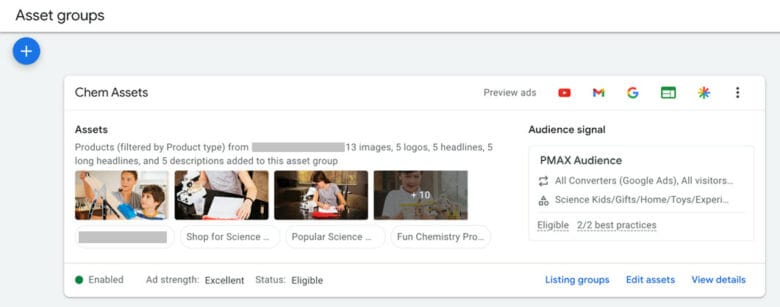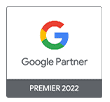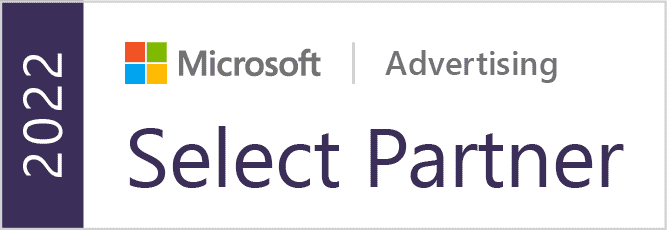By now, all of your Smart Shopping campaigns and Local campaigns have been automatically “upgraded” to Performance Max — whether you wanted them to be or not.
No matter its failings, Smart Shopping was at least familiar to us all. Now, PPC marketers have to master an entirely new system, thanks to Google’s ever-persistent push toward automation.
Managing new eCommerce PPC campaign types is always stressful — not to mention expensive as you learn the ins and outs of building and managing successful campaigns in this system.
Like many digital agencies, we were wary when we first learned of Google’s upcoming switcheroo. But now, after a few months of transitioning multiple clients to Performance Max, we can say that the new system is nothing to be afraid of.
Our thoughts in short: It’s a better digital marketing system for many brands, but it’s not for everyone.
To help you ease your own transition and set your brand up for success, we’re covering a few topics in today’s guide, including:
- What Performance Max is (and how it works)
- Our experience with Performance Max for eCommerce
- A primer on creating your first PMax campaigns
Remember: If you ever want an expert to configure and manage your PMax campaigns for you, our team is always happy to help.
What Is Google Performance Max?
Performance Max is a new Google Ads campaign type that uses machine learning to improve the delivery and performance of ad placements across Google’s channels, including:
The machine draws from your assets (including text and creative) to deliver the right ad in the right format at the right time to improve conversion rates for your ad spend.
In other words, you don’t have to define a bid strategy: PMax takes care of that for you.
Google sees Performance Max as the next evolution of Google Ads automation, which is why they’ve replaced Smart Shopping with this system. In Google’s eyes, Performance Max offers everything Smart Shopping did and more, so there’s no need to maintain the earlier version.
However, it remains to be seen whether all Performance Max campaigns will bear out this vision and improve your advertising results.
How Performance Max Works
Performance Max is designed to help both online and physical stores improve their sales and lead generation by using content in a way that maximizes a brand’s desired conversion goals.
For the new system to work, you’ll need to provide a definition of your goals and some basic assets. This includes text snippets, images, and, ideally, video. (Performance Max Google ads can also draw additional assets from your feeds, such as Google My Business.)
You’ll specify whether or not you’d like geo-targeted campaigns, and then you’ll set your budget.
Tip: Like other types of Google campaigns, Google defaults location settings to “presence or interest.” Make sure to switch to “presence” only to avoid targeting users outside of your desired location.

You can also supply PMax with starter audiences, including any remarketing lists you might have and any Google Audiences and/or audience segments you’ve defined as part of your previous Google Ads eCommerce strategy.
Once it has all of this data, Performance Max will start serving ads across all Google platforms, using smart bidding and the creative assets you supplied to make customer acquisition more efficient. (Therefore, you should be comfortable with Google’s increased control over multichannel ads before launching your PMax campaigns.)
Initially, Performance Max will use your information to try to target your best audience. However, with its machine learning, the system will increasingly refine the audience for your ads. It will even start to develop a sense of where in their journey each customer is and try to supply the ad that matches that stage.
(You can also provide Performance Max with additional Audience Signals to help it hone in on your target audience’s demographics faster.)
The video below is hosted on YouTube. If you need assistance with viewing the video, please contact [email protected].
As with other Google products, Performance Max plays its cards close to its vest. It provides insights to help you refine your campaign, but it won’t tell you everything.
Google does like its secrets.
Performance Max for eCommerce: Our Experience So Far
So, how does Performance Max work out for eCommerce brands?
By now, we’ve transitioned enough of our clients to get a good sense of the Performance Max system. Because it’s an automated system, the sooner you start your campaigns, the more data the PMax machine will have to create effective campaigns for bringing in new customers.
That said, here’s what your eCommerce brand can expect:
- First, you’ll likely see a dip in results as the machine conducts its initial learning.
- After a few weeks of learning, you’ll see your results start to improve (and, in many cases, exceed the results you achieved with Smart Shopping!).
- For most eCommerce brands, it can take about four to six weeks to match your previous cost per acquisition (CPA), so patience is key.
That said, not all eCommerce brands will benefit equally from the new system.
What Does (and Doesn’t) Work
The PMax automation engine needs data to effectively understand the patterns in your audience and your campaigns. So, the more data you can supply, the better your Performance Max eCommerce campaigns will work.
In our experience, the bigger your budget and the more SKUs the machine has to work with, the better off your brand will be.
With a plethora of data, the faster the algorithm will learn, because it has a steady stream of content to optimize your ads. If you can supply this information from one or more steady feeds (like a regularly updated Google My Business Profile, Google Merchant Center, or product feed), you’ll get even better results. We also recommend actively engaging via the Audience Signals interface during setup to maximize conversions.
The video below is hosted on YouTube. If you need assistance with viewing the video, please contact [email protected].
On the flip side, that means that PMax doesn’t work as well for smaller companies with a limited budget and a relatively small number of SKUs.
This limited data means the machine takes longer to learn, leading to a significantly diminished return on ad spend (ROAS). Similarly, if PMax is given the wrong Audience Signals at setup, the learning period might be too long for some small retailers’ budgets. You might also see lackluster performance if you don’t have a lot of creative to supply.
Bottom line: The more data you can give Performance Max, the better the results you’ll receive.
How to Create Your Performance Max Strategy
While these are the biggest trends we’ve noticed thus far, we’ll be the first to remind you that Performance Max is still new — which means we haven’t learned all its nuances yet.
However, keeping the abovementioned trends in mind, there are a few ways your brand can hit the ground running with your PMax campaigns.
1. Gather your creative.
Performance Max wants enough creative assets to mix and match with the ad formats it shows potential customers.
For a single campaign, you must supply images in these dimensions:
- 1 x 600×316 landscape
- 1 x 300×300 square
- 1 x 314×314 square (for campaigns with store visits goal)
- 1 x 128×128 logo
- Recommended: 1200 × 628
- Max file size: 5,120KB
- Video >10 seconds in length
Each asset group can have up to 15 images.
Technically, video is optional to set up Performance Max campaigns. However, if you don’t supply any video assets, Google will make one for you, and they’re almost always universally bad (think Facebook Friendaversary but customer-facing).
Therefore, it’s worth it to create a 10-second video yourself beforehand.
Note: If you’re also supplying a campaign from feeds (such as Google My Business), don’t put the same imagery in your asset groups that comes via the feed, or else risk duplication.
In addition to visuals, you need text for your campaigns. At a minimum, this means:
- Three 30-character headlines
- One 90-character headline
- One 60-character description
- One 90-character description
You can include up to five long headlines, five short headlines, and four long descriptions in your asset library.
2. Test as a complementary channel.
Performance Max isn’t designed to be your only ad campaign. Instead, it’s what Google calls a “finisher” — helping you to capitalize on the results of your other search campaigns.
To get the most from Performance Max, you should still be running keyword-based search ads, Google Shopping Ads, and more.
Note: If you have PMax campaigns running alongside Search campaigns, and a user query is identical to an eligible Search keyword of any match type in your account, your Search campaigns will be prioritized over Performance Max. Sometimes, however, existing keywords may show in Performance Max instead of your Search campaigns, due to ineligibility factors.
In other words, if you’re particular about which keywords are showing in which campaigns, be careful with your Performance Max.
Finding the right balance between these different campaign types will take time. But, with a little tweaking, you’ll find how much you need to spend on awareness campaigns in other channels to feed Performance Max’s increasingly powerful conversion strategies.
3. Experiment with as much budget as possible.
PMax benefits from having more money to play with to test different ad strategies over different platforms.
We know: There’s a lot of competition for your ad dollars, and the only way to get more money for PMax is to take it from another part of your budget. However, this is a case where it’s probably worth it.
The sooner you can get your PMax campaigns “over the hump,” the better your return. As PMax performs better, you can reallocate money back to other parts of your ad spend, if necessary.
Let the Experts Do It For You
In short, Performance Max is a potentially powerful new approach to automated ad campaigns that lets you reach Google’s entire ad inventory with campaigns focused on specific goal completions.
So far, results have been average. But, even in the time we’ve been working with it, we’ve seen results improving — so we’re hopeful that the payoff will be big.
If there’s one thing to remember, it’s that PMax has a steep learning curve. If you’re not prepared to deal with a long-term dip in performance or don’t have the time to babysit these campaigns during their learning period, you might be better off placing your trust in experts who can help you achieve better results faster.
If you want an expert PPC team to create an effective Performance Max strategy for your business, our team of strategists is ready to help.
Contact us anytime to see what Inflow can do for you.









0 Comments